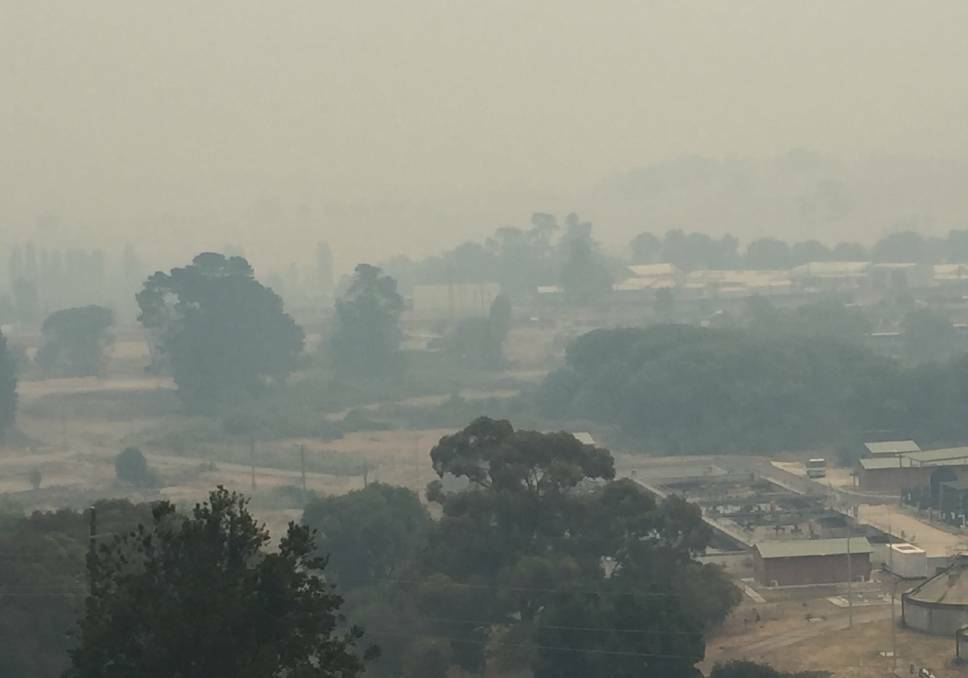
The NSW Environment Protection Authority released their 2019/20 Summer report on the Blue Mountains and Lithgow Air Watch Program which showed high particulate concentrations during the bushfire and dust storm events.
Subscribe now for unlimited access.
$0/
(min cost $0)
or signup to continue reading
NSW Health stated that this posed a significant health risk to the respiratory health and wellbeing of residents, especially at risk populations including children, the elderly, pregnant women and people with pre-existing health conditions.
During the period, multiple health warnings were issued by the NSW Ministry of Health on taking precautions to reduce exposure to bushfire smoke (NSW Health, 2020) by staying indoors and avoiding any strenuous activity.
The Blue Mountains and Lithgow Air Watch project is a 12 month community initiated research project, that aims to provide a better picture of air quality in the region. The project is set to come to an end later next month.
A NSW EPA spokesperson said that the summer air quality report indicated air across the region declined significantly due to the unprecedented bushfire season and summer dust storms.
"As a result, the PM2.5 [Particles with a mass median aerodynamic diameter of 2.5m] concentrations and PM10 [Particles with a mass median aerodynamic diameter of 10m] concentrations exceed the air quality standards in December 2019 and January 2020," an EPA spokesperson said.
The summer air quality monitoring was undertaken at the Katoomba compliance station between December 1, 2019 and February 29, 2020. During this period, air quality in the region declined significantly in December due to bushfires, and improved over the next two months.
"In response to poor air quality during the bushfires and dust storms NSW Health issued multiple health warnings reminding communities to take extra care of their health during the bushfire emergency," an EPA spokesperson said.
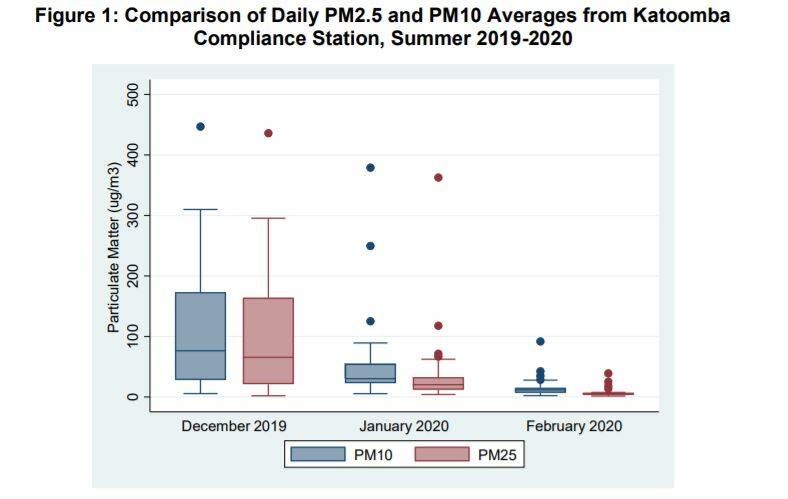
During December 2019, PM10 and PM2.5 peaked on boxing day at 447 g/m3 and 436 g/m3 respectively, well over the air quality standards.
Some data was invalidated during the summer period due to overloading of the particulate filters.
In comparison, winter 2019 had a peak measurement of 12 g/m3 for PM10, and 10 g/m3 for PM2.5; while spring PM10 concentrations peaked at 118 for g/m3 and 115 g/m3 for PM10 and PM2.5 respectively.
The report states that the decline in air quality is associated with the unprecedented bushfire season which burned over 10 million hectares Australia wide (CSIRO, 2020), as well as dust storms in summer 2020.
The PM10 concentrations exceeded the air quality standard of 50 g/m3 (averaged over 24-hours) on 18 days in December 2019, eight days in January 2020, and one day in February 2020.
In December 2019, PM2.5 concentrations exceeded the daily air quality standard of 25 g/m3 (averaged 24 hours) on 20 days in December 2019, nine days in January 2020, and two days in February 2020.
The PM10 peaks coincide with the timing of dust storms in the Sydney basin.
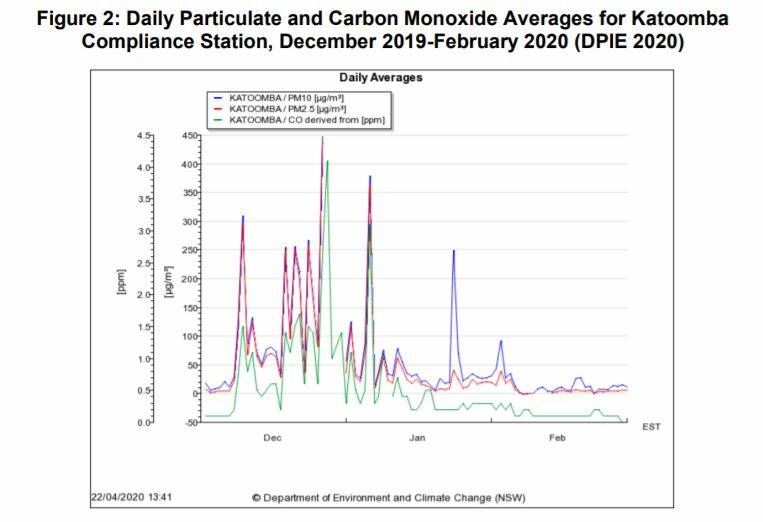
The Summer findings from December to February show that the KOALAs (Knowing Our Ambient Local Air Quality), located at Katoomba, Lithgow, Springwood and Wentworth Falls, show that hourly concentrations of PM2.5 and PM10 were significantly higher during December than January or February.
During January and February 2020 bushfire activity subsided and significant rainfall of 700mm in Katoomba, 615mm in Springwood and 190mm in Lithgow were recorded, according to the Bureau of Meteorology which helped improve air quality in the region.
"Air quality improved significantly in late January and February," an EPA spokesperson said.
During December airborne particulate concentrations were highest for Lithgow, followed by Katoomba, Wentworth Falls and Springwood due to the towns proximity to the fire fronts.
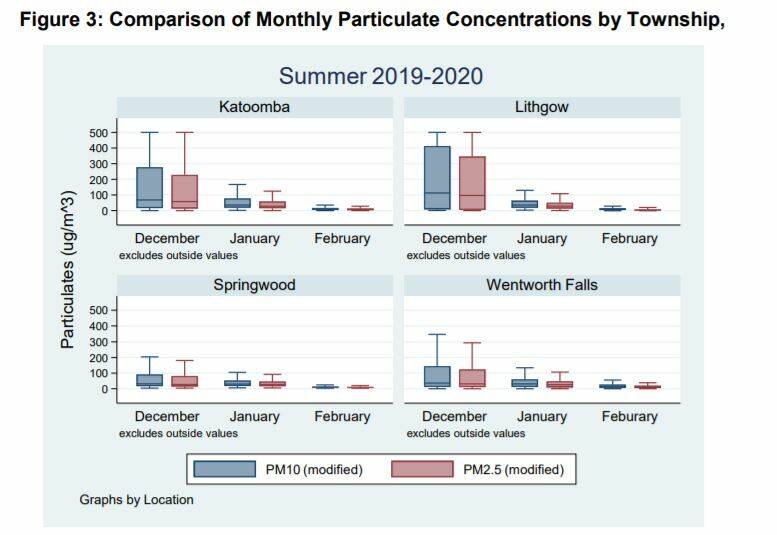
Two KOALAs located in Lithgow malfunctioned during the summer period. K62 between the 4th and 21st December 2019 and K63 between the 6th to 24th February 2020.
The hourly CO concentrations were higher in comparison to winter and spring, ranging from 0 up to 2ppm, whereas previous seasons were typically less than 0.1 ppm (Figure 5).
Particulate CO concentrations peaked in December 2019 during the bushfire period, and trended higher in Lithgow, Katoomba and Wentworth Falls in comparison to Springwood, which were in closer proximity to the fire front.
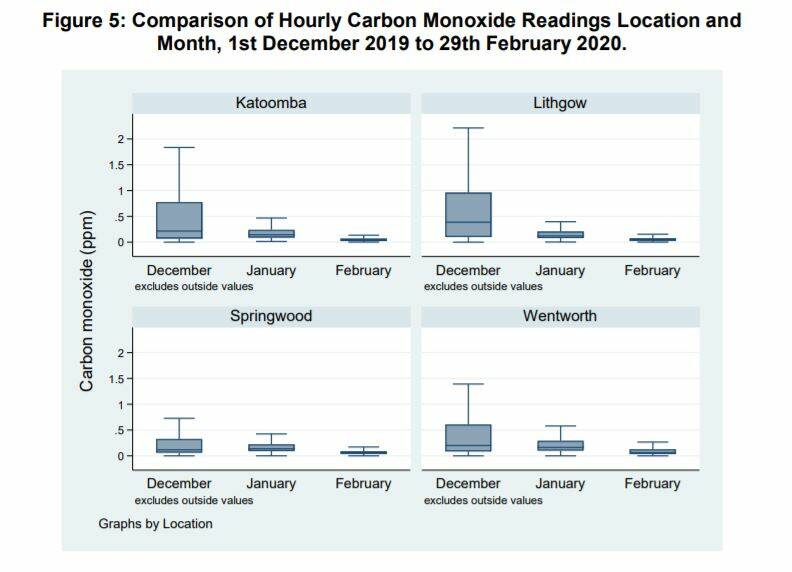
The summer period findings demonstrate the adverse impacts of bushfires on air quality. During this period, daily averages for PM2.5 and PM10 exceeded air quality standards on 31 and 27 occasions respectively. During the period, PM2.5 peaked at 436 g/m3, over 17 times the air quality standard of 25 g/m3 and PM10 peaked at 447 g/m3, nearly nine times the air quality standard of 50 g/m3.
The Autumn report is due to be released in July and a final report drawing on the 12-months of data from the Katoomba air quality monitoring station will be released following the conclusion of the project.


